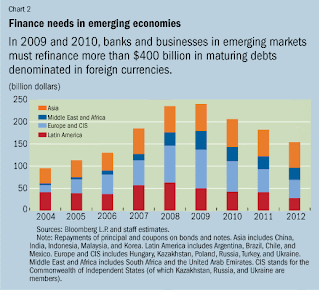As the global financial crisis has swept from developed to developing economies, the IMF has upgraded its support for low-income countries. New initiatives are expected to boost concessional IMF lending to $17 billion through 2014. These low interest-rate loans now come with policy programs that have more flexible conditions. The IMF has also overhauled its lending instruments, especially to address more directly countries’ needs for short-term and emergency support.
Signs of success
The IMF’s support for low-income countries needed an upgrade, first of all, because of the improved economic conditions in these countries. Many have made great strides toward macroeconomic stability. In the 1990s, the vast majority of low-income countries faced long-standing economic problems that required radical, long-term policy changes often accompanied by debt relief or cancellation.
Now, however, many of these economies are becoming more open and integrated into the global economy. Low-income countries are joining international capital markets, entering markets for goods and services, attracting foreign investment, nurturing their own private financial sectors, and benefiting from money sent home by citizens working abroad.
But with this greater international openness and integration comes greater vulnerability and exposure to the ups and downs of the global economy. This was highlighted by the impact that sudden jumps in world food and fuel prices had on several countries’ economies in 2007 and 2008. Spillover from the global financial crisis soon followed. It was apparent that the new generation of more stable but more vulnerable low-income countries needed a new generation of IMF loan facilities to support them.
More money
To combat the immediate ill effects on low-income countries of higher commodity prices and a slumping world economy, top priority for the IMF was making more money available. A first step was to modify the IMF’s main vehicle for helping countries that are hit by forces outside their control—the Exogenous Shocks Facility. Changes in September 2008 made this facility easier and more flexible to use, and 13 countries have already made use of it since then.
Then the IMF doubled its low-income country access limits—the ceilings on how much each country can borrow from the IMF. And it ramped up its total concessional lending to these countries, which is now expected to reach $8 billion over 2009–10 and $17 billion through 2014.
In addition, more than $18 billion of a planned $250 billion allocation of IMF Special Drawing Rights (SDRs) will go to low-income countries. These countries can benefit by either counting the SDRs as extra assets in their reserves, or selling their SDRs for hard currency to meet balance of payments needs.
Changes in lending instruments
To make its financial support more flexible and tailored to the diversity of low-income countries, the IMF has established a new Poverty Reduction and Growth Trust, which has three new lending windows. The new windows, which are expected to become effective later in 2009 when donor countries have given their final consent, are
The Extended Credit Facility (ECF), which replaces the Poverty Reduction and Growth Facility (PRGF). The ECF
- Provides sustained engagement in case of medium-term balance of payments needs
- Should be based on a country’s’ own poverty reduction strategy, and
- Offers more flexible timing requirements than the PRGF for countries to produce a formal poverty reduction strategy document.
The Standby Credit Facility (SCF), replacing the Exogenous Shocks Facility’s High Access Component, is similar to the Stand-By Arrangement for middle-income countries. The SCF
- Provides flexible support to low-income countries with short-term financing and adjustment needs caused by domestic or external shocks, or policy slippages
- Targets countries that no longer face protracted balance of payments problems but may need help from time to time, and
- Can also be used on a precautionary basis to provide insurance.
The Rapid Credit Facility (RCF), which
- Provides limited financial support in a single, up-front payout for low-income countries facing urgent financing needs
- Substitutes for a regular IMF loan when use of the other two facilities, which involve one- to three-year policy programs, is either not necessary or not possible, and
- Offers highly flexible financing that provides single-use loans that replace the Exogenous Shocks Facility’s Rapid Access Component and the subsidized Emergency Natural Disaster Assistance; and offers successive drawings for countries in post-conflict or other fragile situations, replacing and expanding subsidized Emergency Post-Conflict Assistance.
For policy advice and signaling to donors, countries can request non-financial assistance under the existing Policy Support Instrument (PSI), which
- Supports low-income countries that have secured macroeconomic stability and thus do not need IMF financial assistance, and
- Can provide accelerated access to the new SCF in case of subsequent financial needs.
Low-income countries will receive exceptional forgiveness through end-2011 on all interest payments due to the IMF under its concessional lending instruments.
Increased IMF financial support for low-income countries has been joined by changes in the design and assembly of the agreed policy packages—called programs—that accompany IMF loans. These changes aim to
- Strengthen the focus on supporting poverty alleviation and growth, for all these programs
- Protect public spending even as economic downswings cut revenues
- Prioritize national budgets in the direction of spending targeted at the poor, and
- Focus loan conditions on critical areas, such as transparent management of public resources.









